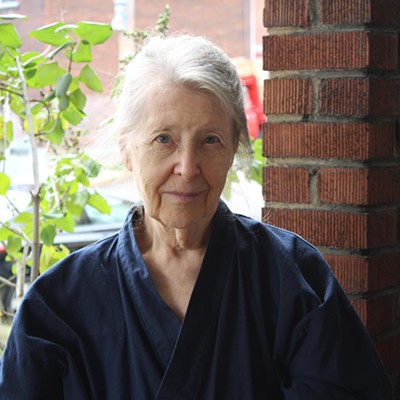Race and Renaissance
By Joe W. Trotter and Jared N. Day
University of Pittsburgh Press, 304 pp., $29.95
Carnegie Mellon University professors Joe Trotter and Jared Day set an ambitious goal for their new book: to capture the past 60 years of the black experience in Pittsburgh.
The result? Race and Renaissance: African Americans in Pittsburgh Since World War II is a very helpful first word on that history, though it is far from the last.
That's by design, of course. As the authors acknowledge upfront, the book "seeks to pinpoint areas for future research" and is "primarily a work of synthesis rather than a detailed case study."
While Trotter and Day rightly lament a "dearth of research" on the Pittsburgh black experience, much of this material will be familiar. Even government officials, for example, acknowledge that the construction of the Civic Arena was handled badly -- at least now that they want to demolish it. And most casual students of local history probably know about the Hill District's prominence as a jazz mecca, or about the NAACP's effort to desegregate the Highland Park pool. (I was surprised to learn, however, that desegregating local roller-skating rinks was even harder.)
But there is plenty here worth pondering. I could have read an entire chapter, for example, of stories about the Freedom House Ambulance Service, which was organized to serve black communities passed over by other ambulance operators. (Launched in 1968 and often staffed by people who lacked a high school diploma, Freedom House was disbanded in 1975, when the city established its own EMS department.) And a motif of the book is that black perspectives on issues like public housing, or school busing, were often more conflicted than current political rhetoric assumes.
Trotter and Day offer an especially fine account of housing issues. You'll be reminded that until the 1960s, "[t]he city's leading dailies routinely carried 'for colored' listings of property for sale or rental to black people." You'll learn about the power of the "East End Multilist," a members-only Realtors group that excluded black members ... and thus excluded black residents from living near whites. And who remembers that in the late 1970s, white North Siders were complaining that real-estate agents dissuaded potential homebuyers from the area by "citing the predominantly black Northview Heights housing project" nearby?
Throughout, Trotter and Day write in an accessible style, notably free of academic jargon and impenetrable graphs. (Charts are tucked in at the back, and there are a lot of them -- 25 pages' worth of tables depicting employment and demographic trends.)
Obviously, Race and Renaissance covers a lot of ground: from job equality to fair housing, from police accountability to political redistricting. Any chapter of this book could be a book in itself.
Which can be a problem. On the one hand, Race and Renaissance teaches us a little about a lot -- just as its authors intend. The result, though, is that some crucial events get only shallow treatment, with the book's survey of more recent historical developments feeling particularly rushed. The ongoing struggle for police accountability -- a central issue for black activists over the past 15 years -- is dispatched in three paragraphs.
And sometimes, Trotter and Day are simply too credulous. For example, they quote former Pittsburgh City Councilor William Robinson grousing that during his losing 1985 re-election bid, his anti-apartheid position cost him the political support of business leaders and white officials. That's a hell of a claim; if true, it would raise questions about ties between Pittsburgh's corporate community and South Africa's apartheid regime, as well as complicity by black leaders. On the other hand, Robinson's assertion could simply have been a self-justifying bit of political spin. (In news accounts from the day, black ward leaders faulted Robinson for his failure to support other black politicians.) Trotter and Day do nothing to investigate the claim, which means they probably shouldn't have raised it.
But despite a few false leads here and there, this book provides a useful guide for future investigation. And that, clearly, is the point.














